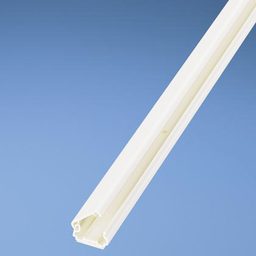 The wire conduit refers to the pipe where cabling passes through. This duct protects insulation and isolates cable wiring. National and local building codes generally require the use of a particular type of conduit for safety and health reasons. The cable conduit is different from the electrical variety. You can install cabling conduits in between walls even if you will not use these pipes immediately; in fact, it is easier and more cost-effective to lay out the conduit during the construction phase.
The wire conduit refers to the pipe where cabling passes through. This duct protects insulation and isolates cable wiring. National and local building codes generally require the use of a particular type of conduit for safety and health reasons. The cable conduit is different from the electrical variety. You can install cabling conduits in between walls even if you will not use these pipes immediately; in fact, it is easier and more cost-effective to lay out the conduit during the construction phase.
Running wire through this fixture ensures protection against tremendous weather conditions, deterioration, and chemical mist. It reduces the need to replace cable wires often. It is also a safety measure since exposed wires face greater risks of equipment failure. The conduit also secures the cable from impact, especially if cabling is mounted in high-traffic sections or near the building elevator. Make sure that the conduit is clear—it should never be over 40 percent full to prevent cables from squeezing each other and causing damage that leads to unnecessary expenses. Do not make tight curves inside. Instead, bed in a pulling elbow or open plate beside the duct. This enables installers to pull the cables through without the possibility of getting them wedged inside.
There should be enough clearance between the cables and conduit. Clearance is the space between the topmost cable and the conduit’s inner top. It has to be a minimum of one-fourth inch, and one inch for extensive installations of those cables that need multiple twists. Compute the jam proportion. Jamming is the cramming of three cables next to each other inside the conduit. This takes place once the cables are being pulled or when the network cables begin to twist. The total diameter must be computed prior to calculating the ratio.
It is important to implement an effective cable management system in the workplace or even at home. It is an essential step in professional cabling installation that keeps the entire system orderly and efficient. Cable management does not only leave a positive impression; it can also enhance performance. Cables that have been installed properly are less prone to getting entangled, being ripped out, or sustaining environmental damage. Moreover, proper installation minimizes clutter, improves workflow, and facilitates troubleshooting.
By acquiring superior cable management from a highly reputable company, your network systems are upgraded. You avoid problems that can cause undue delays and jeopardize daily operations. The main objective of cable management is not just to route cables tidily through walls and buildings—the goal is to make IT management more convenient. If you have a larger span for installation, it is vital to employ proper cable management as well as organization of different work stations.
